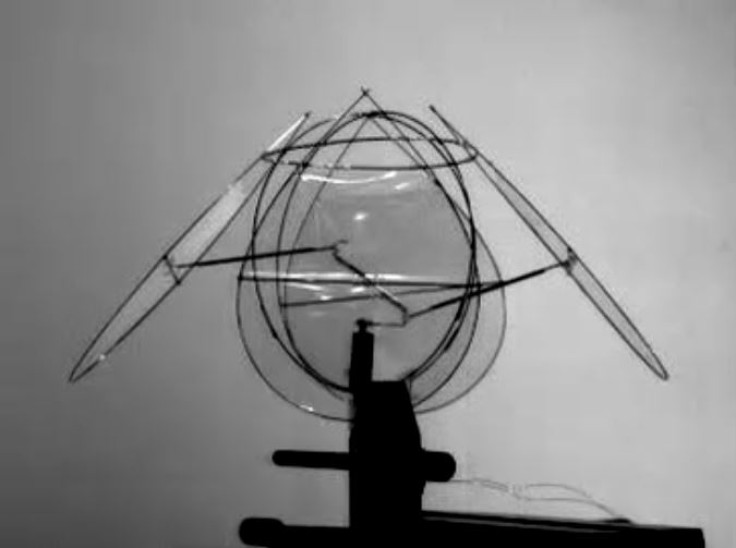Flying Jellyfish Inventor: Flapping Robots and the Future of Miniature Air Travel
Throughout history, inventors have always been inspired by nature. Velcro was invented after Swiss engineer George de Mestral's dog came home covered in burdock burrs, while more recently, gecko feet were used to develop climbing robots with sticky lizard feet created to clean spacecrafts.
Now, New York University inventor Leif Ristroph has created a novel flying mechanism – a flying jellyfish. The machine, which is able to hover stably in the air, solves problems faced by other flying robots.
Published in the Journal of the Royal Society Interface, the authors say that current robots that mimic the wing motions of insects back and forth are have an intrinsic instability in body orientation, and to keep them upright, a sensory motor system is required. Normal hovering robots also tend to flip over if uncontrolled, they said.
Footage released by the authors shows the jellyfish-like flying machine hovering in the air.
It looks like a jellyfish!
Speaking to IBTimes UK, Ristroph said that initially, jellyfish motions were not looked at to create the machine: "Actually, we weren't inspired by jellyfish from the outset, but once we were well into building the gadget we then realised we were essentially making a flying jellyfish. Our mind-set going in was to find a simple alternative to the way insects beat their wings, and the picture of an umbrella opening and closing somehow popped into my head."
He said that he had previously studied how insects stay upright during flight, and found they need sensors and neural networks to work out when they have been tilted – by a gust of wind, for example. They then use corrective wing motions to recover their body position.
"Robots that mimic wing motions encounter these same issues – we say they are 'intrinsically unstable' and need active control. I wanted a simple flapping-flight scheme that is stable and we discovered this jellyfish-like scheme can be made stable – if tilted, our flyer comes back upright on its own, no sensors needed. The question of why this works is still a bit of mystery. We know that the location of the centre-of-gravity is very important, but we don't completely understand how the aerodynamic forces stabilise the machine."
What is its purpose?
The flying jellyfish will not be used as a means of transportation for humans, unfortunately. Ristroph said that the way the machine is designed, it cannot compete with current means of flight, such as helicopters and hot air balloons. However, he said the potential possibilities for the flying jellyfish are actually much more interesting: "Our analysis suggests that building bigger versions is actually much easier than building small flyers – this comes about because of the scaling of aerodynamic forces.
So overall we're more interested in scaling down, which is an interesting fluid dynamics and engineering challenge. In terms of applications to search-and-rescue - manoeuvring in a collapsed building to locate people, for example – smaller is probably better.
"I think in this arena we are basically at the beginning of some exciting times. I imagine that we are at a stage similar to circa 1900 in human flight – lots of ideas, good and bad, need to be explored."

Aquatic creatures the way forward?
In the past scientists have looked to flying creatures to master their own means of air travel. But is this all now changing with a shift to aquatic animals? The authors note that organisms such as jellyfish, scallops, squid and cuttlefish use a jet propulsion mechanism to move.
Ristroph said this is not necessarily a move away from birds and insects, but is an interesting area: "I don't know that swimmers are better inspiration than flyers – they're just different and new sources of ideas. I think mimicking insects and birds is a great place to start in terms of making robots, but one of the main points of this work is to let people know that there are many strategies that we haven't explored yet, and maybe Nature didn't explore either. It's an exciting time in which we need to dream up new ways to fly in order to see which is best."
What next?
Ristroph said there are two requirements for the next stage of development – to get a battery on board to and implement radio control, so the movements can be directed. "I think to achieve this will require collaboration with true engineers – as an applied mathematician and physicist I can develop a concept vehicle, but making it a feasible device will certainly require engineering expertise."
© Copyright IBTimes 2024. All rights reserved.






